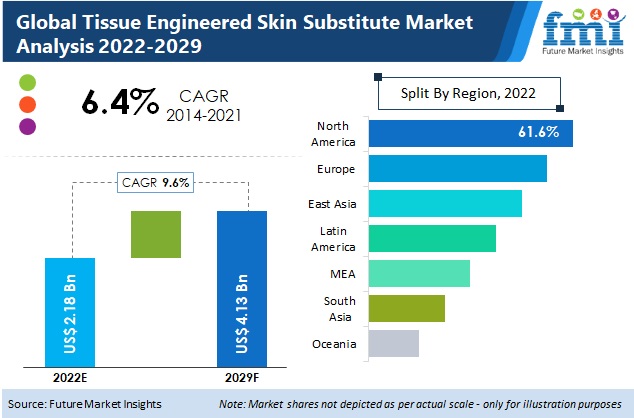Sales of vapour barriers are projected to witness steady rise in the following years, prominently propelled by sustained consumption by the building & construction industry. As suggested by a new Future Market Insights (FMI) report, global vapour barrier market will exhibit a CAGR of around 4% during the forecast period of 2022-2029.
Water condensation can damage the sturdiest of constructions, which is why vapour barriers hold significant importance, as they offer complete insulation from vapour and moisture to building structures. Use of vapour barriers also allows for optimum efficiency of a space conditioning system, thereby fueling their demand across the construction industry.
Heavy usage of vapour barriers in commercial and residential buildings to prevent moisture damage to infrastructure is anticipated to be the primary growth driver. However, increasing utilization of vapour barriers in the packaging industry to prevent moisture damage and interstitial condensation in packed goods opens new growth avenues for industry players.
Request a report sample to gain comprehensive insights at@
https://www.futuremarketinsights.com/reports/sample/rep-gb-3080
Key Takeaways – Vapour Barrier Market Study
- Over the period of projection, building infrastructure, whether private/public or commercial/residential, will be based on green building concepts to strike a fine balance of environmental sustainability and modern amenities. As a result, the demand for vapour barriers is projected to significantly spur over the forecast period.
- Polymer materials segment to retain its spot as a prominently preferred material followed by asphalt & bitumen, whereas drywall board lumber and gypsum board projected to observe growth at a swift pace in the market.
- Membrane type vapour barriers are expected to register a dominating share due to their easy installation. However, the popularity of the coating segment is increasing across the globe in recent years due to its enhanced moisture resistance.
- To meet stringent manufacturing rules and regulations, manufacturers are trying to increase the use of materials with high recyclability and decent biodegradability index. Also, due to new norms for VOC emissions, many manufacturers are looking to revamp their manufacturing process in order to minimize these emissions.
How is Vapour Barrier Market Structure Defined?
The market of vapour barrier is highly competitive due to decent presence of tier 1 players in the market. Though tier 1 market players have a considerable hold on market share, numerous small-scale and regional players exist in the market. Manufactures like The Dow Chemical Company and Saint Gobain, along with other organised and leading manufactures hold more than half of the market pie.
More About What the Report Covers
Future Market Insights (FMI), published a thorough research analysis in its report for global vapour barrier market, offering information regarding historical developments from 2014-2021 and forecast projections and opportunity assessments on the basis of analysis for future scope and ongoing tends in the global market.
The research study offers opportunity roadmap and market projections across the globe based on various categories such as material (glass, sheet metal, polymer, asphalt & bitumen, gypsum board, drywall/board lumber, plywood, concrete/brick), type (membranes, coatings, cementitious water proofing, and stacking & filling), site (external, internal), application (corrosion resistance, insulation, air insulation, sound insulation, thermal insulation, water proofing, material packaging & stacking, microbial & fungal resistance), end use (construction, packaging, automotive), and region (North America, Latin America, Europe, MEA, South Asia, East Asia, and Oceania).
Ask Us Your Questions About This Report: https://www.futuremarketinsights.com/ask-question/rep-gb-3080
Alternative Usage Of Vapour Barrier Compounds In Various Industrial Applications
In accordance with the trend of sustainability, manufacturers are focusing on the utilization and up gradation of manufacturing techniques to enable the manufacture of environment-friendly insulating materials. As a result, the business for natural and eco-friendly insulation materials is expected to remain highly attractive over the coming years.
Cellulose based insulation materials are now being commonly manufactured utilizing recycled newsprint, certain forms of waste papers, and from cardboard. These materials have high recycled efficiency. Furthermore, key players have been developing environment friendly innovative solution of spray foam insulation that can also reduce carbon emission. These spray foam insulation are being manufactured from non-HCFC gas.
Read Related Report Links:
https://cipmo-system.mn.co/posts/22585225
https://network-759413.mn.co/posts/22585226
Contact Us
Unit No: 1602-006
Jumeirah Bay 2
Plot No: JLT-PH2-X2A
Jumeirah Lakes Towers
Dubai
United Arab Emirates
LinkedIn| Twitter| Blogs
